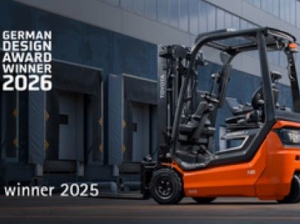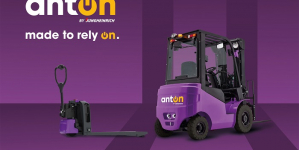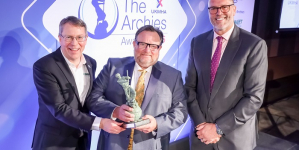-
AI startup Onton raises $7.5M to reinvent the way the world discovers and decides what to buy - November 26, 2025
-
Forklift Market Positions for Recovery as Confidence Expected to Build from 2026 - November 26, 2025
-
PROCare achieves 300% order capacity increase and 99% picking accuracy with Forterro’s ERP solution, Orderwise - November 26, 2025
-
DHL boosts operational efficiency and customer communications with HappyRobot’s AI Agents - November 25, 2025
-
STENA LINE TEAMS UP WITH CAMERA TELEMATICS TO DRIVE SAFETY IMPROVEMENTS AT IRISH SEA PORTS - November 25, 2025
-
Another design award for Toyota’s lithium-ion Traigo_i counterbalanced forklift - November 21, 2025
-
Stuut Technologies Raises $29.5 Million Series A Led by Andreessen Horowitz to Automate Accounts Receivable Work - November 20, 2025
-
INCREASED DIGITAL INVESTMENT REQUIRED TO KEEP PACE WITH 2026 CUSTOMS CHANGES - November 19, 2025
-
FULFILMENT SOLUTIONS FOR SPORTS MERCHANDISE: KEEPING OUR EYE ON THE GAME - November 19, 2025
-
COMPLEX, COSTLY & CONFUSING – THE END OF DE MINIMIS - November 19, 2025
How To Build An ATEX Forklift.
To comply with European legislation, forklifts operating in potentially explosive atmospheres require special conversion to reduce the risk of ignition. But what does this involve? Safety company Pyroban explains.
“A very small percentage of forklifts are used for operations in Zone 1, 2, 21 or 22 hazardous areas,” explains Steve Noakes, Group Engineering and Operations Director for Pyroban. “Therefore, equipment manufacturers (OEMs) are not usually able to invest in making trucks that come off the production line compliant with explosion protection standards. Instead, OEMs work with specialists like Pyroban.”
The Regulations:
Explosion protection conversion company Pyroban modifies forklift trucks to conform with ATEX 2014/34/EU* requirements, and standards such as EN1755:2015*, which covers all equipment and protective systems intended for use in potentially explosive atmospheres. For example, a chemical factory or waste management site that needs to comply with ATEX 1999/92/EC and keep their people safe.
Assessment:
When Pyroban receives the truck for conversion, it conducts a full assessment to identify and evaluate ignition risks.
Using the requirements of EN1755:2015 as a guide, Pyroban’s specially trained engineers assess all mechanical and electrical components to determine if they could cause ignition, by generating heat or a spark. This can include switches, sensors, relays, contactors, motors, generators and controllers, as well as brakes, transmission, hydraulics, forks, the engine and the exhaust. The interior and exterior are also evaluated extensively, including parts such as seats, armrests, panels, the cabin and tyres.
“The engineers assess each component for risk during normal operation with the intended Zone for operation in mind,” says Steve. “For example, the ignition of either gas or vapour for Zone 1 and 2 areas, or combustible dust for Zone 21 and 22 operations.”
Conversion:
Once evaluation is complete, the conversion can then be started. This varies in complexity depending on both the make-up of the truck and the specific needs, and hazards, of the end user’s application. Sometimes original components will be replaced with an ATEX compliant explosion protected version. Other parts will be modified, for example the electrical interface between the part and the control system may be adapted. This is done in close collaboration with the OEM to ensure the part and the truck still perform exactly as intended.
Testing and Certification:
Having applied the explosion protection conversions, Pyroban conducts tests to verify that the systems are functioning correctly, and in line with ATEX requirements. After the required modifications have been validated, the vehicle is then returned to the OEM where the CE mark can be applied, certifying the truck for use in the required hazardous zone in line with European legislation.
“The whole explosion protection conversion process may seem labour intensive, as it can take from 4 to 12 weeks, with up to 600 hours work by Pyroban’s experts,” says Steve. “However, as it only takes one small spark to cause a disastrous explosion, it’s important for businesses to understand why there are no shortcuts when it comes to explosion protection.”
For more information, visit www.pyroban.com, call +44(0)1273 466200 or email info@pyroban.com.

































